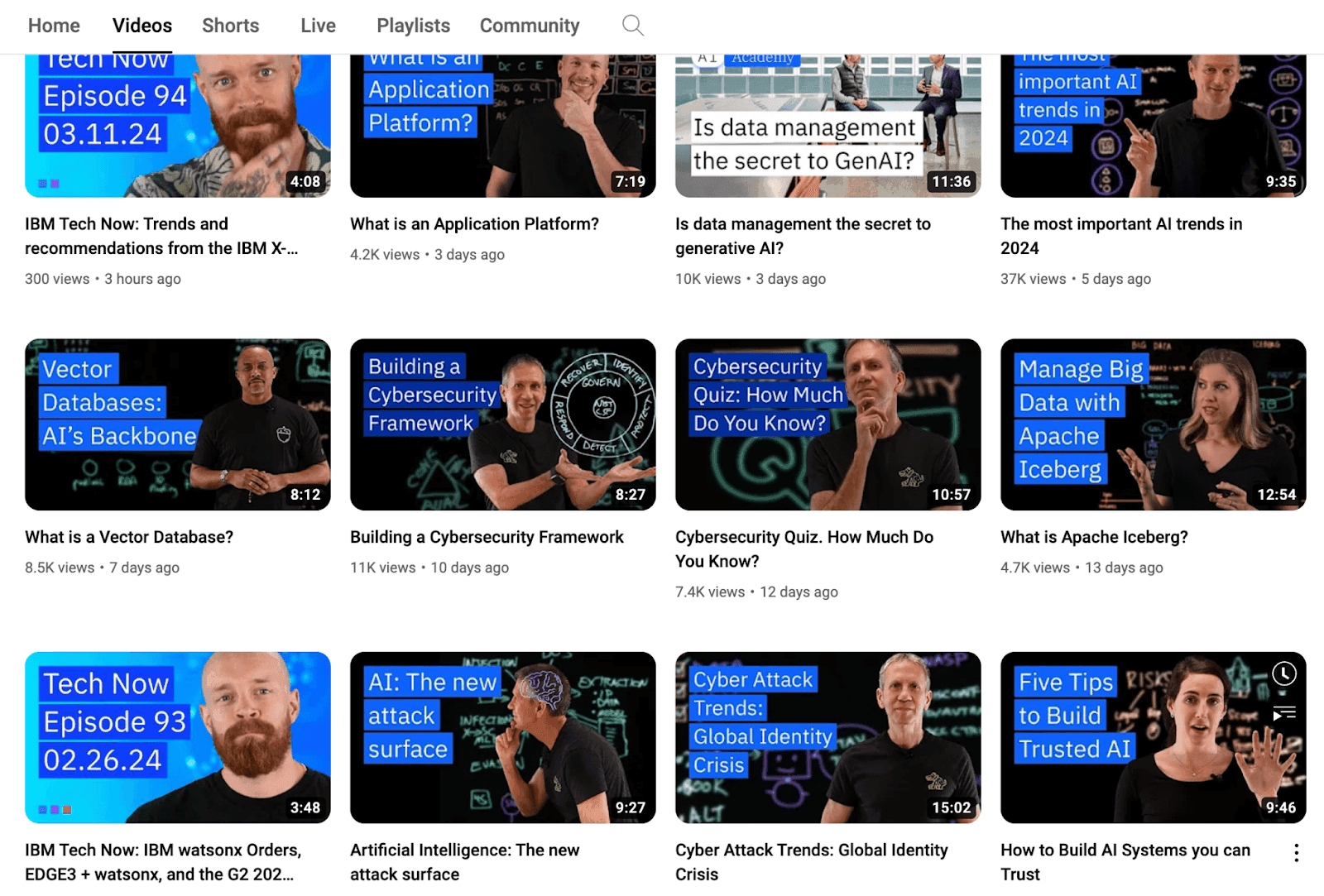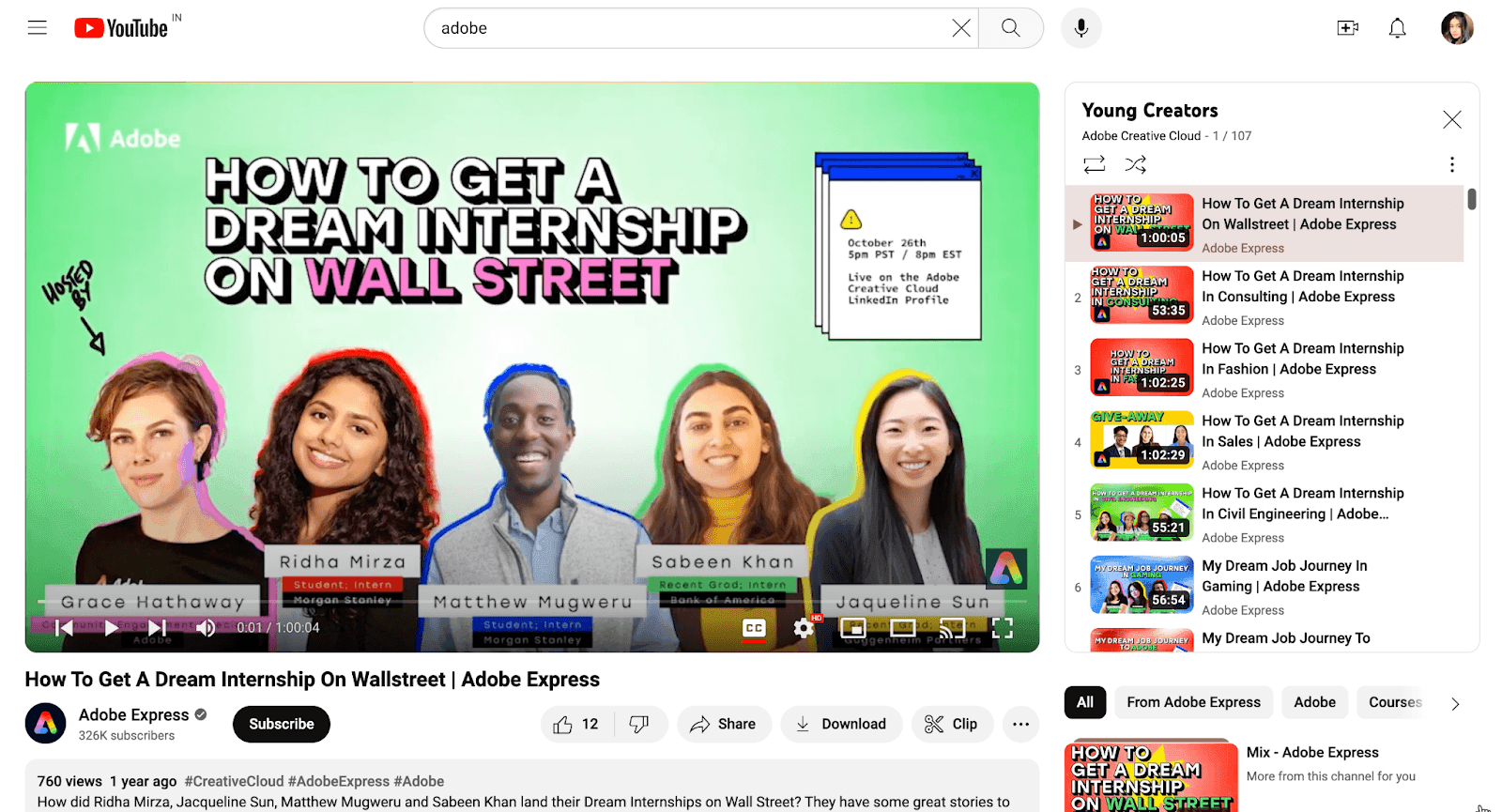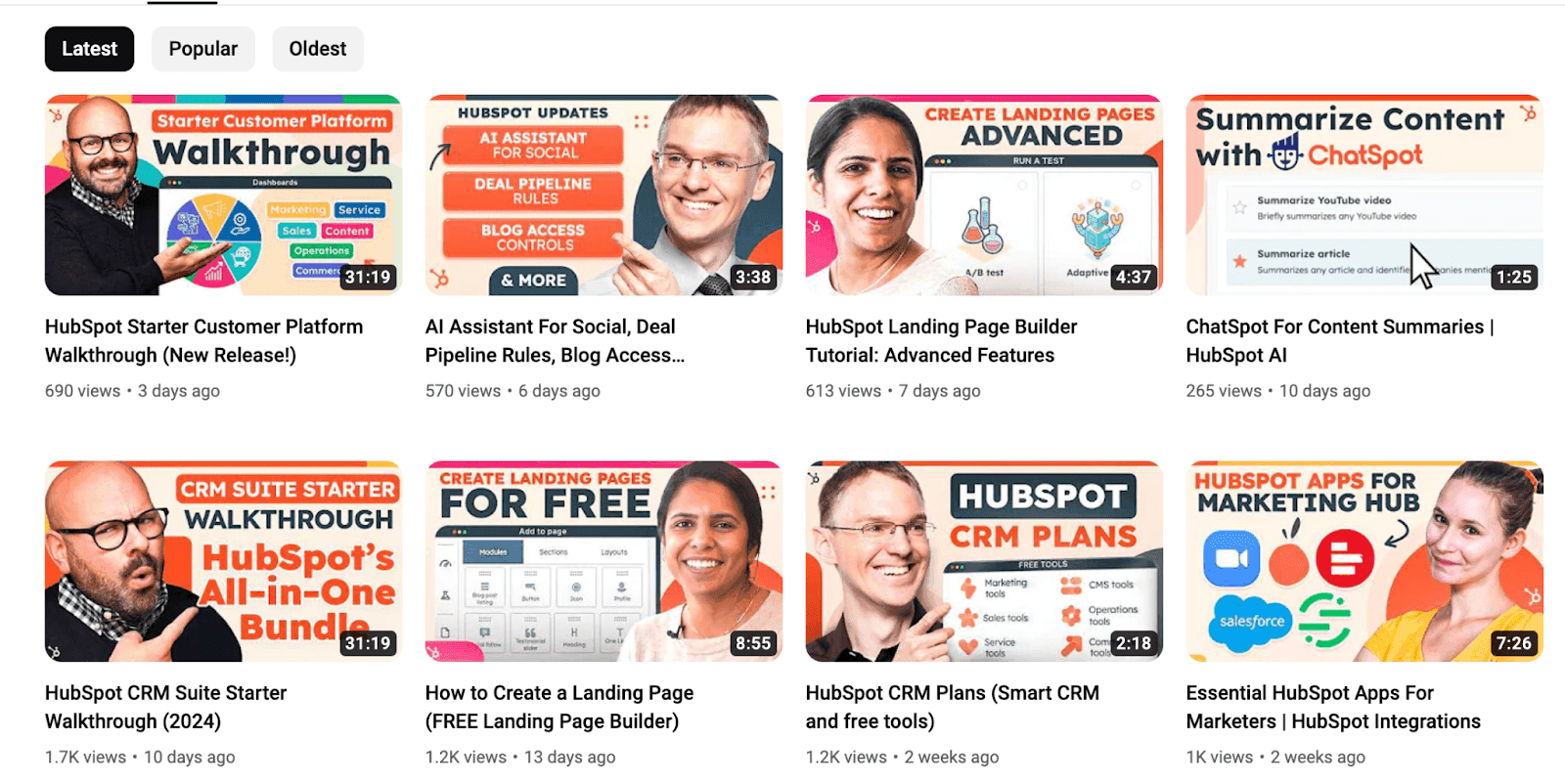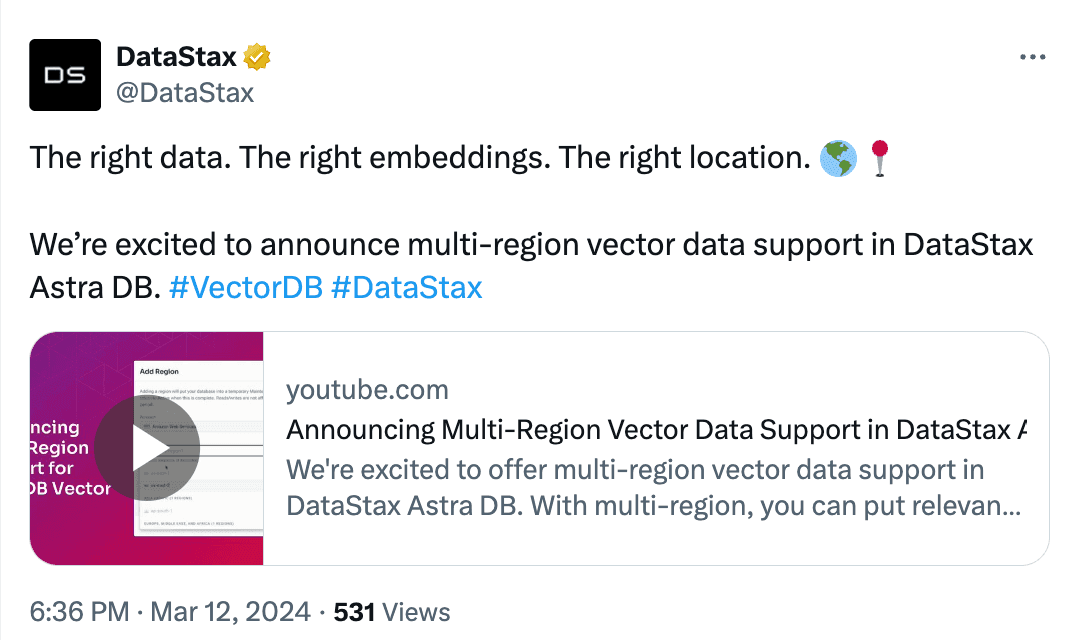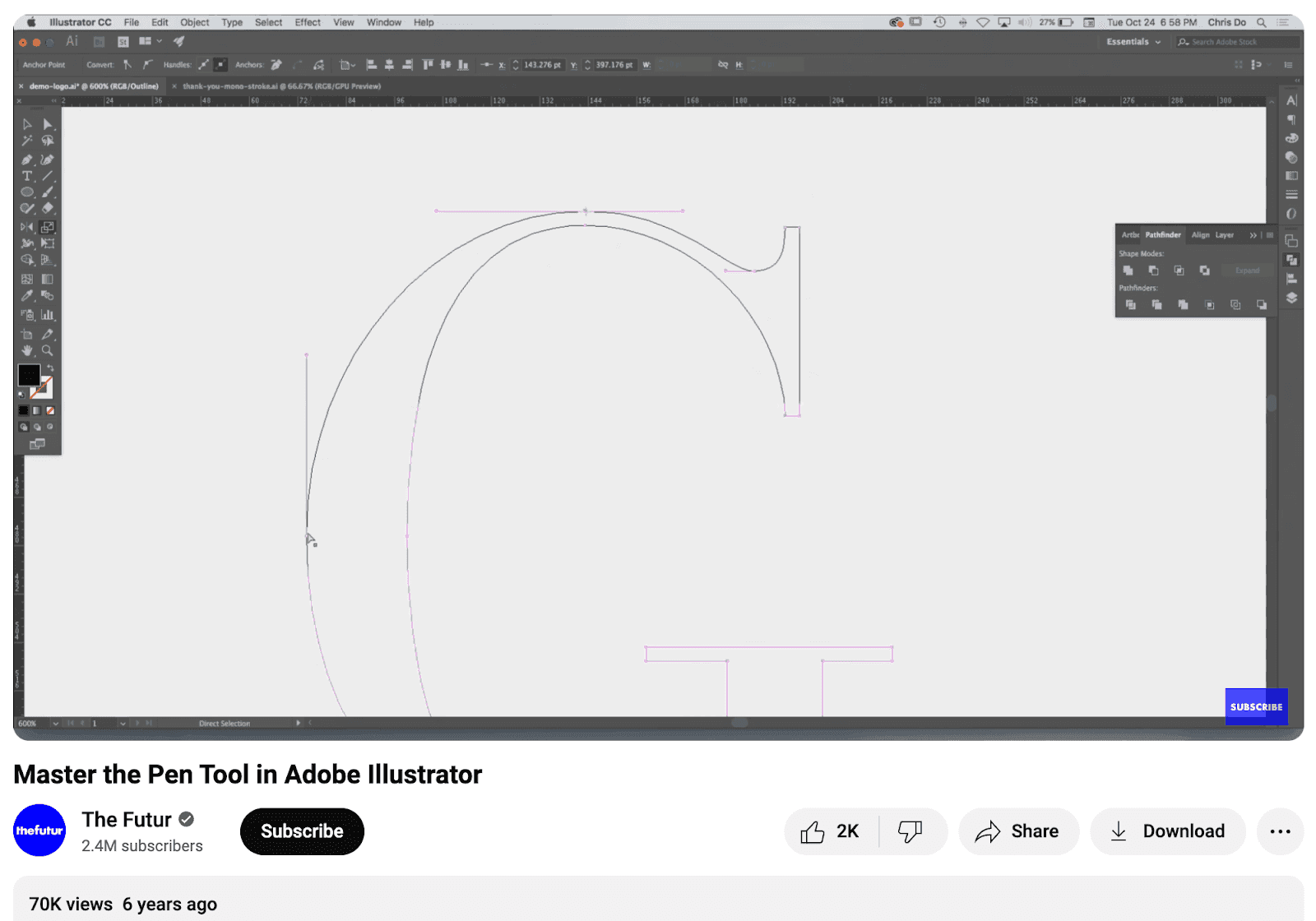Content marketing is changing, and YouTube could be your strongest competitive advantage.
With viewers consuming over 1 billion hours of YouTube content daily, companies are spending more ad dollars on digital video ads. Even compared to “trendy” platforms like TikTok, YouTube is still the undisputed leader with double the users.
However, impressive stats alone won’t cut it on the platform. To make headway, you need a solid YouTube content strategy — a deliberate plan to capture, engage, and convert your audience.
In this blog post, we’re breaking down the steps to succeed on YouTube. We’ll cover everything from boosting your visibility to understanding and working with the YouTube algorithm. Stick with us as we simplify the strategic elements that turn YouTube into a powerhouse platform for brands.
Understanding Your Audience
When you know your audience, you can create content that works and gets noticed on YouTube. This involves:
YouTube has a massively diverse audience — over 2 billion users, with about 51.2% women and 48.8% men. What’s more, a whopping 77% of users are aged 15-35, so it’s also popular across different age groups.
To start strong, get to know basic YouTube demographics, and remember it’s not just the USA — YouTube has over 100 versions worldwide. Consider:
- Who’s watching your videos? Tailor your videos to align with your YouTube channel’s objectives and your ideal customers’ preferences. Adapt existing buyer personas from your current business marketing plan to craft specific viewer personas for YouTube marketing.
- What’s your brand expertise? Use your brand’s knowledge to identify values that resonate with your audience, positioning your brand as an industry authority. Answer questions about your audience’s challenges, your solutions to those challenges, and the customer journey stages you want to target through YouTube.
- Are there any “shared” passions? Connect the dots between your audience, their interests and viewing preferences, and your brand’s strengths. Identify a shared passion that links your brand, YouTube content, and audience needs to create a strong bond.
Investing In Audience Research
For effective audience research, use the following tools and methods to identify and understand your audience:
- YouTube Analytics: If your YouTube channel is set up, check the Analytics tab for insights into your audience’s demographics and interests. Learn how viewers discover your content — be it through search, suggested feeds, or other sources.
- Social Listening: Closely monitor discussions on YouTube and other platforms, keeping an eye out for brand mentions or specific keywords. Also, stay on top of trends to understand your audience’s changing interests.
Content Planning
Once you’ve nailed down your audience, the next step is to plan your content.
Here’s how to go about it:
Develop A Content Calendar
Create a content calendar to align brand goals and audience preferences and keep your video uploads consistent. Outline a schedule that accommodates your audience’s habits and preferences.
Consistency is key on YouTube, and a well-structured calendar ensures a steady stream of engaging videos.
Identify Relevant Content Types
Diversify your content to meet different audience needs. Consider the following three main content categories:
- Educational content: Offer valuable insights, tutorials, or industry updates. For instance, you could create tutorial videos demonstrating new features or providing troubleshooting tips.
- Inspirational content: Highlight success stories or share behind-the-scenes glimpses. You can showcase client success stories, highlighting the positive impact of their solutions.
- Entertainment content: Entertain your audience with engaging, light-hearted but relatable content. Think: humorous skits related to industry challenges for relatable and shareable content.
A fantastic real-life example of an effective YouTube content plan is IBM’s YouTube Channel.
IBM covers a lot on its YouTube channel — it has videos that teach about new technologies and share inspiring stories about their community work, plus entertaining snippets with experts. This variety ensures the content appeals to a broad audience with different interests.
Additionally, IBM maintains a consistent publishing schedule, keeping its audience eager for more.
Create Engaging Content
The next crucial step is producing content that captures the audience’s attention and keeps them coming back for more.
Let’s check out the specifics of creating engaging content on YouTube.
Compelling Titles & Thumbnails
Your title and thumbnail are the first things viewers notice, so you must take them seriously.
Add primary and secondary keywords into titles and descriptions to improve discoverability. For a wider global reach, consider translating titles into different languages.
Try out CoSchedule’s YouTube Description Generator to write engaging and SEO focused YouTube descriptions in seconds!
Consider using our AI-powered Free YouTube Generator to generate optimized YouTube titles effortlessly. Once you’ve got some potential titles, check their effectiveness with our YouTube Title Analyzer and choose the best one to attract new viewers.
As for thumbnails, start by analyzing top-performing thumbnails related to your content. It’s best to opt for cool visuals featuring faces, expressions, and some text to enhance visibility and click-through rates.
At CoSchedule, we follow these practices to the T — from writing clear titles to designing bold thumbnails that make viewers curious to click and explore. Check it out below:
Video Production & Editing Best Practices
Quality matters, even in the world of YouTube.
Invest in quality equipment for clear visuals and crisp audio. Maintain a consistent brand aesthetic to boost recognition, and edit videos for a smooth flow and conciseness. Adobe sets a prime example with its tutorial videos, combining clean visuals, concise editing, and a consistent brand style.
Authenticity & Storytelling
Authenticity resonates with audiences. Share behind-the-scenes glimpses, testimonials, or success stories. Salesforce frequently integrates customer stories into their content. This authenticity adds a human touch, making its videos relatable and engaging.
YouTube Shorts
YouTube Shorts are bite-sized videos you can customize (think: adding music, adjusting the speed) and share on YouTube and other social media platforms.
Why YouTube shorts? Shorts are easy to find on the YouTube homepage and can help seriously grow your audience. Case in point: In 2024, Shorts has crossed around 50 billion daily views, so you can imagine the potential for your channel.
Consistent Posting Schedule
Whether it’s weekly, bi-weekly, or monthly, create (and adhere to!) a posting schedule that keeps your audience engaged. HubSpot, for instance, has a regular schedule, where it uploads fresh content every two to four days.
This consistent cadence ensures that HubSpot followers eagerly await new videos, maintaining their engagement and hunger for more content.
Optimize for YouTube’s Algorithm
YouTube SEO isn’t just about creating great content. It’s also about ensuring your content is discoverable by the right audience, at the right time. Which means optimizing your channel’s playlists, metadata, video description, and overall channel.
But here’s the kicker: the way YouTube SEO works is a bit like getting your website to show up on Google/Bing searches, but with a twist — YouTube personalizes things.
When you search for something on Google, you and your friend sitting next to you will probably see the same results. But on YouTube, it’s different. The site looks at what you’ve watched before and what you like, then suggests videos based on that.
So how can you ensure YouTube’s personalized touch works in your band’s favor? You need to optimize for YouTube’s algorithm.
Here’s what you need to do:
- Keyword research: Figure out what words people are using to find videos like yours. Use tools like Google Keyword Planner or just type your topic into YouTube’s search bar to see what pops up.
- Keyword optimization: Put those keywords in the right places. This includes:
- Title: Use the main keyword to grab attention. Use
- Description: Add more keywords and explain what your video is about.
- First three sentences: Hook viewers by dropping in the main keyword.
- Tags: Even though they don’t have a big impact, tossing in your keywords as tags can still boost visibility. Try our YouTube Tag Generator tool to create effective and tailored tags for your videos faster.
- Use timestamps: Split your video into sections so people can jump to what they want to watch.
- Detailed descriptions: Write up a good description for each video. Include links to your website, other social media platforms, and of course, a clear CTA.
- Engage and encourage engagement: Apart from keywords, YouTube’s algorithm looks at metrics like watch time, click-through rate (CTR), and audience retention to decide how to rank and suggest your videos. Getting likes, comments (and responding!), shares, and subscriptions tells YouTube your content is worth promoting to more people.
Promotion & Distribution
While YouTube does its fair share of promoting your channel through recommendations, giving it a boost through your own promotion efforts is key to getting more YouTube subscribers.
Here’s how to effectively promote your channel and engage with your community to build a subscriber base:
Leverage Social Media & Cross-Platform Promotion
Leverage your existing social media following by promoting your YouTube channel across platforms like Facebook, Instagram, Twitter, and LinkedIn.
Share your channel launch and new video releases, embedding videos directly into posts whenever possible. Also, repurpose your YouTube content into blog articles to maximize exposure.
Datastax is a great example here. The brand shares engaging snippets of its videos, along with links to its YouTube channel, to get more views.
Invest In Influencer Marketing
Tap into the follower bases of established and budding YouTubers by teaming up for collaboration videos or shoutouts. Look for influencers with similar audiences but different content styles. Don’t be shy to ask your own audience for suggestions, too!
Once you’ve found a good fit, collaborate on videos or series that bring value to both sides.
Even a big brand like Adobe partners with design influencers to share helpful tips and tutorials, expanding their reach. One collaboration with The Futur got over 70K views and tons of positive feedback. As for Adobe, its users (who also follow The Futur) gained better insight into using Adobe tools like the pen tool.
Community Building
Encouraging viewer participation has a twofold effect. First, it boosts engagement to foster a loyal fan base, and second, it boosts visibility as YouTube recommends your videos more frequently.
You can:
- Respond to comments.
- Hold live-streaming events for Q&A sessions.
- Seek input on content ideas.
And that’s just the tip of the iceberg! Actively interacting with your audience nurtures a community around your channel. This means more loyal customers which means more sales and more overall revenue.
Performance Analysis
YouTube Analytics helps you understand how your channel is performing, so you can make adjustments to get more people interested and achieve your big-picture goals.
Measuring Success With YouTube Analytics
To ensure your YouTube channel keeps hitting the mark, you must constantly measure its performance and adapt accordingly. This means diving into YouTube Analytics to track key metrics, such as:
- views
- watch time
- audience demographics
- engagement
Now, all this might seem a bit overwhelming at first, but focusing on certain key metrics can give you valuable insights into how your channel is doing.
Keep an eye on:
- Impressions: These show how often your thumbnails appear to viewers.
- Click-through rate (CTR): This tells you what percentage of people who see your thumbnails actually click to watch.
- Watch time: This is the total time viewers spend watching your videos.
- Average view duration: It’s the average number of minutes people watch per view.
- Average percentage viewed: This is the average percentage of your video viewers watch per view.
- Traffic sources: These show how people are finding your videos on YouTube.
Adjusting Strategy Based On Data
Once you have these metrics, it’s time to analyze them and optimize your content strategy. For instance:
- If you notice your click-through rate is low, you might need to create more compelling thumbnails.
- If your watch time is high, but your average view duration is low, consider trimming down your videos to keep viewers engaged.
- If you see a particular demographic engaging more with your content, tailor future videos according to their preferences to resonate with them.
More importantly, don’t be afraid to try new video formats and explore new topics. Focus on enhancing production quality, and your brand’s YouTube channel will stay fresh and interesting for viewers.


